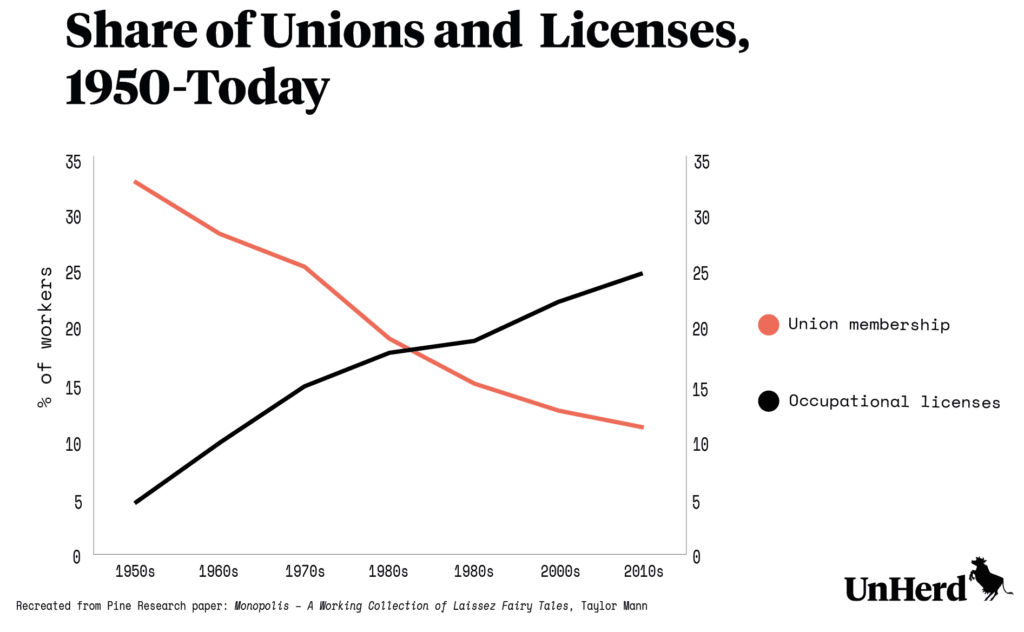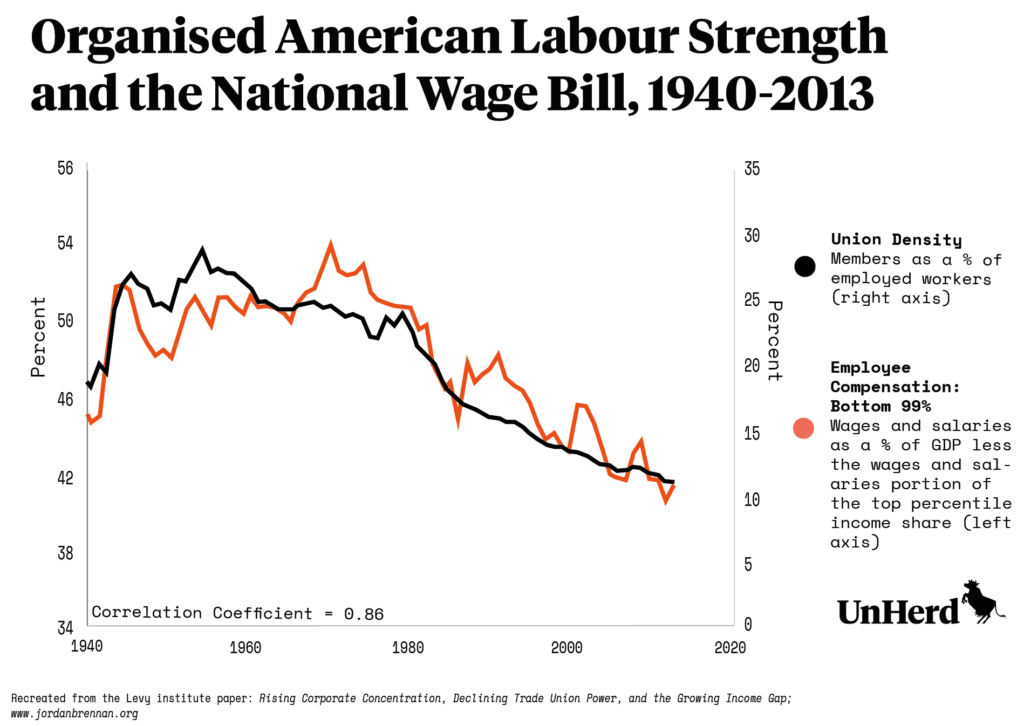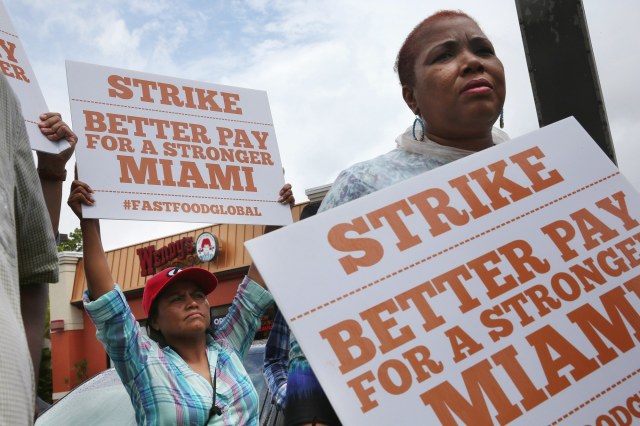Credit: Joe Raedle/Getty Images

Cleaning airplanes is a dirty job. Even dirtier when your company doesn’t pay enough to keep your children off the street. Angel Rivera is a mother of four, working as a cabin cleaner at Boston Logan Airport. She works overtime to support her family and pay the bills. Her first job as a cabin cleaner paid only $8 an hour, which made her mounting living costs unbearable. Writing in The Nation she describes “Low pay, abuse and disrespect” as “common currency”. At one point, her kids and girlfriend ended up living in a homeless shelter and she relied on government assistance. When she tried to organise her fellow workers into a union, she was fired.
Everything changed when she took another cleaning job. This one was unionised under 32BJ SEIU, a collective of property services workers, and one of the fastest growing private sector unions in the country. She began earning $17 an hour, had access to health care and moved off government assistance. She even had the ability to take vacation to spend time with her children.
Some see unions an anachronistic, or, worse yet, a threat to free-market capitalism. But unions represent a broad swath of American jobs – teachers, engineers, pilots, farmers, doctors and even rocket scientists. There is now a Freelancers Union which seeks to use collective bargaining for freelancers seeking health care, benefits, and insurance.
Since the birth of the nation, unions have existed in various iterations. After the Great Depression in the early 1930’s, tensions had escalated between workers and firms due to deteriorating working conditions. In 1935, President Roosevelt stated to Congress that “the rights of employees freely to organize for the purpose of collective bargaining should be fully protected,” and his New Deal was enacted. It made a host of sweeping reforms aimed at strengthening the battered economy and providing guidelines for basic working conditions. The New Deal helped to re-strengthen unions, which had waned through the roaring 20’s.
Unions maintained an important role in American working life for decades, but then declined again. In 1983, about one in five Americans were part of a union – today, only 6.4% of private sector workers in America are unionised and less than 11% of total workers. This represents a considerable decline in workers’ ability to band together and advocate for their collective rights.
Similar to the Gilded Age of the late 19th century, American capitalism today has moved from a model of competing companies in each industry, to a highly concentrated economy with a few dominant firms controlling most industries. Workers now have to negotiate with monopolists and oligopolists for wages and benefits – and with minimal union participation, companies have capitalised on the fact that workers are isolated and dispersed. All kinds of strange phenomenon show up that disempower workers. A few examples:
- Mandatory arbitration – workers have no legal right to sue their employer in court, or as a group, and must work out any grievances privately with the employer and an arbiter. Today, 56% of private sector, non-unionised workers are forced into mandatory arbitration, and of those, 23% are also denied any access to class action lawsuits.
- Non-compete clauses – non-competes now cover almost 18% of the entire American workforce. Nearly 40% of workers have signed one in previous jobs.
- Wage theft – A study by the Economic Policy Institute found that 2.4 million workers lose $8 billion annually (or an average of $3300/year per worker) due to minimum wage violations alone. This is a quarter of their earned wages.
It’s not only corporates who have benefited from low worker power – the government has cashed in as well in the form of excessive occupational licensing requirements (where workers require a form of permit to perform their job). Workers must pay fees, go through lengthy educational training, or be of a certain age.
In some industries where consumers need to be protected, licensing is important – like healthcare and education. But does the state of Louisiana really need to make hair braiders undergo 500 hours of training for a hair-braiding license? According to one national study, 73 occupations have a greater average training burden than emergency medical technicians, including bartenders, massage therapists, and tree trimmers. It is harder to become a barber, than it is an EMT. Seventy years ago, around one in 20 American workers needed an occupational license. Today, it is one in four.

Some people will point to the ugly side to unions as justification for banning them from the workplace. The 1954 film On the Waterfront depicts a squalid tale of corruption and crime in a New York longshoreman’s union, and in many way things haven’t changed. The list of union corruption cases is long over the past few years – last year, Rome Aloise, the treasurer of the Teamsters, was found guilty on multiple corruption counts.
Yet crime perpetrated by CEOs in the cases of Enron, Worldcom, Valeant and other companies never raises arguments that CEOs should not represent management or shareholders. Crime is the problem, not unionisation.
Though unions have been criticised for becoming entrenched entities that protect their own interests, it is more helpful to think of them as a mechanism for collective bargaining power. These entities represent one of the only collective forces that workers have to advocate for themselves.
What’s more, unions actually raise the standard of living for all working Americans. Inequality is inversely related to union membership. An important paper by Jordan Brennan of the Levy Economics Institute found that “the commodified power of large firms depresses economic growth and exacerbates income inequality while the countervailing power of organized labor mitigates inequality and produces significant inflationary pressure.”

Workers now face pressure on all sides – governments that require excessive licensing to work, and corporates that require workers to accept employment on their terms. Without any form of countervailing power, American workers are left to fight alone.
It is a toxic cocktail for the average American. The hangover from increased corporate power is real, with many struggling to meet basic needs, like Angel Rivera. The balance of power has swung too far in favour of the corporate giants. Unions have an essential role to play in rectifying that by providing a platform for workers to demand what is rightfully theirs: a living wage, healthcare, and peace of mind for them and their families. And in the process, it might just restore some faith in capitalism’s power to increase prosperity for all.










Join the discussion
Join like minded readers that support our journalism by becoming a paid subscriber
To join the discussion in the comments, become a paid subscriber.
Join like minded readers that support our journalism, read unlimited articles and enjoy other subscriber-only benefits.
Subscribe